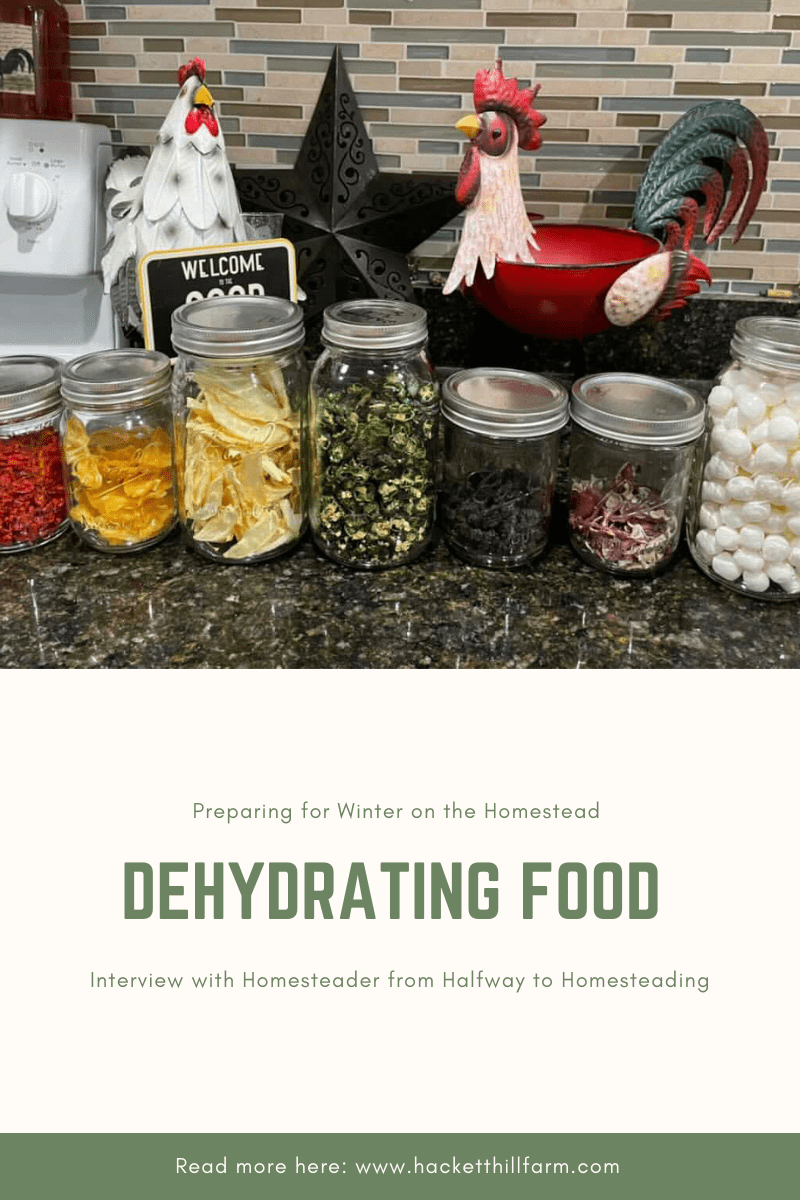
Preparing for Winter on the Homestead- Dehydrating Food
This time of year is an especially busy one for homesteaders as they prepare the homestead. As winter closes in, there is a lot of prep work to make sure your family and animals have what they need for the coming months of cold weather. While supermarkets remain open, most homesteaders pride themselves in their ability to remain self sustaining through the long cold months ahead.
Here at Hackett Hill Farm, we are partnering with fellow homesteaders to bring you a new series to the blog, focused on preparing the homestead for winter. This week we have Emily from Halfway to Homesteading joining us to talk about how her and her family prepare for the cold ahead by dehydrating food!
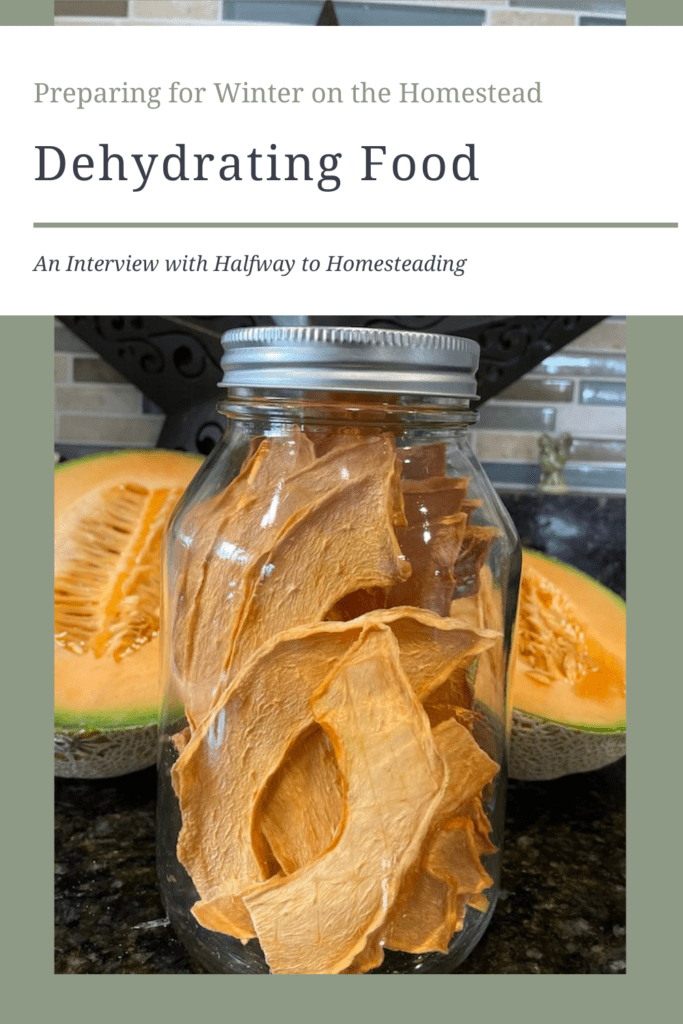
Why Dehydrate Food?
Dehydrating food has some pretty awesome benefits that make it a worthy competitor to the more traditional methods of canning. Let’s review why you may want to dehydrate verses canning or even freezing your harvest this year.
Keep the Nutritional Content
One of the most important benefits of dehydrating your foods is that it retains the nutrients in the food better than most other forms of preservation. We all know that when we start heating food a lot of those valuable nutrients are lost.
The best way to eat your food and get all the vitamins and minerals God intended is to pick it and eat it raw right there. This poses a problem though when preparing for winter. Most plants go into dormancy and stop producing. So what is a homesteader to do?
This leads us homesteaders to figuring out a way to keep our food as fresh as possible and dehydrating is one of the oldest methods of food preservation. There has been evidence of dehydration as a form of preservation as far back as 12000 BC!
This tried and true method will keep your food as close to peak nutrients as possible while making it shelf stable.
Save Space
We have all been there…. The freezer is full and the pantry is busting at the seams and there’s still a bounty waiting to be harvested. You have two options, buy a new freezer or figure out a space saving method to keep all of those goodies you just harvested. Dehydrating is you answer!
Much like the humans who eat it; meat, fruits, and veggies are mostly water! When you take that water out of the equation with dehydrating, you are saving a ton of space. More food per square inch!

Portability
Along with saving space in your pantry, dehydrated foods area also super simple to transport! No more over processed food for long car trips and hikes. Hand the kids a handful of wholesome with foods straight from garden to dehydrator.
These dehydrated foods don’t require refrigeration which makes them a great option for camping and hiking.
Time Saving
Canning can take a lot of time. I personally spent multiple days picking and canning green beans with my family this past summer. You can read about that adventure here.
Canning is not a quick process most of the time. With practice it becomes more efficient, but it really requires dedication of the canner to remain close by for monitoring. You never want to leave a pressure cooker unattended.
Dehydrating takes a lot of that involvement out of food preservation. Sure you still have to pick it and wash it in the case of fruits and veggies, but once in the dehydrator your involvement is minimal. Turn the tray occasionally and check the elasticity of the food. Pretty easy if you ask me!
Save the Homestead Money
Saving money on the homestead is a huge deal. There is always something to do to make the homestead better for you, your family, and the critters that live there. There’s always fence to mend, feed to purchase, so on and so forth.
Dehydrating allows you to really maximize your harvest and find great deals at the store that you may otherwise pass up (like the onions and potatoes that Emily will chat about in a minute).
Welcome to Flavor Town!
Have you ever broken open a bag of trail mix from the store only to be sadly disappointed that there is no real flavor there and they overloaded you on the one thing you hate the most? That will no longer be the case when you are dehydrating your own foods to add into a homemade custom trail mix! Welcome to your own customized flavor town!
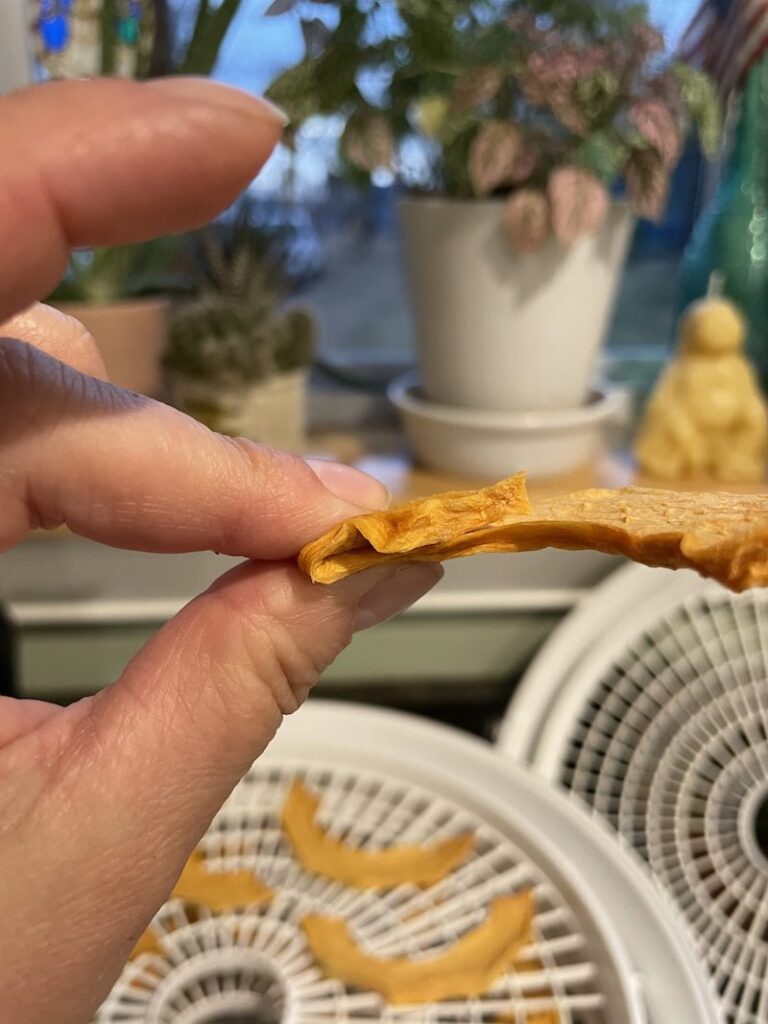
What Foods Are Best Dehydrated?
You can pretty much dehydrate anything from fruits and veggies to milk and meat. You name it, you can likely preserve it this way.
Some of Emily’s favorites are listed in her interview, so keep reading to see what she recommends!
For us we like to keep it simple and delicious, and with dehydrating that is possible!
- Apples
- Bananas
- Potatoes
- Cantaloupe
- Tomatoes – these are great used in soups or stews or ground up added as a topping!
- Peppers- sweet or hot. We make Jalapeno powder to top popcorn and other treats!
- Herbs- basil is one of my favorites but any herb can be speed dried in the dehydrator
- Strawberries
- Jerky Meat- we use ours for Venison a ton!
- Fruit Pureé to make fruit leather (you will need a silicone baking dish that will fit in your dehydrator for this one
- The list goes on and on!
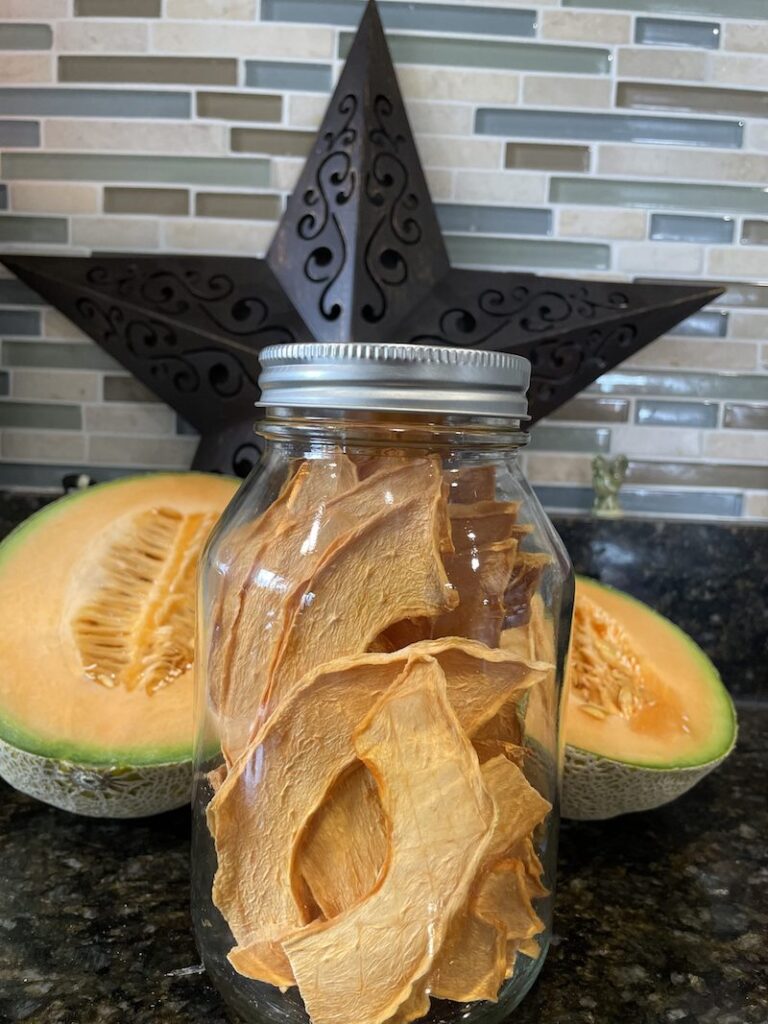
Common Mistakes to Avoid When Dehydrating Food
While dehydrating is one of the most simple methods of food preservations there are a few mistakes you want to avoid when starting out.
Buying the Most Expensive Equipment Out There
Like with all new things you try, don’t spend an arm and a leg on a dehydrator if you aren’t 100% sure that your family will love eating dehydrated foods. Emily gives some good tips on what to look for in a dehydrator, like variable temperature controls, so check those out before buying!
Dehydrating at Too High Heat
One of the most important things about dehydrating is to make sure your heat is as low as safely possible for the item you are dehydrating. Too high and you are essentially burning more delicate items like herbs verses drying them.
The one caveat to this is to make sure meat is cooked at a high enough temperature to kill off any bacteria that may be hanging around.
Not Dehydrating Long Enough
Patience is a virtue! Sometimes it can be really tempting to just go ahead and say enough is enough. But with dehydrating, you want to make sure all the moisture is out for safe long term storage. If there is any moisture in the product, you will grow mold for sure. So take the time to make sure the moisture is 100% out of the food before storing.
After you dehydrate, you will spend a few days afterwards conditioning the food. Essentially this is shaking up the items and ensuring no condensation has formed. If there is any sign of moisture, you will immediate send it back to the dehydrator.
For more common mistakes to avoid and other dehydrating tips, visit the purposeful pantry on YouTube (link below in Emily’s interview!
Alright y’all! Now you have a little more information on dehydrating, let’s meet Emily!
Meet Emily From Halfway to Homesteading

Emily is a wife and mom of three, and man is she a super hero! Her and her family are living in Connecticut and building the homestead of their dreams hours away in Vermont. While they prepare their future home she is also busy homeschooling her children and teaching herself and others how to be more sustainable and self-sufficient.
She focuses on maximizing her harvest and different methods for preserving the bounty she harvests. Her content is so relatable and informative that she is a must follow.
The Interview
Today Emily is joining us to talk about one of her favorite preservation methods and give us a little insight into how she prepares for winter on her homestead. I think you all will love her and the information she share, so let’s get started with our interview!
What drove you and your family to start homesteading?
The current state of our country and world as a whole has been our driving force. For 15 years we’ve had gardens and raised chickens, more for enjoyment and hobby.
Five years ago, we purchased 44+ acres of raw, heavily wooded land in Vermont. At the time, it was a vacation escape for our family, with long term future hopes of off grid retiring there. We live in Connecticut but often camp on our Vermont land and throughout the years started building slowly.
When the pandemic hit, everything seemed to flip upside down and backward. World health, news, politics, the school system, policies, employment, and the supply chain. Everything….changed. And with it, our goals for our family, lifestyle, and plan for Vermont did as well.
We are now fast forwarding our building plans. While we build and prepare to someday move our family to our land, we have turned our more limited space in CT into a modern homestead.
Our gardens have grown substantially, but now, with the purpose of self-sufficiency and preserving. We have been learning and growing new skills along the way. I no longer want to depend on stores, big corporations, or our government to provide for us. I look around in amazement, of how much we ( I! ) have taken for granted, as I learn edible and medicinal plants that literally surround us. I guess, I too have changed.
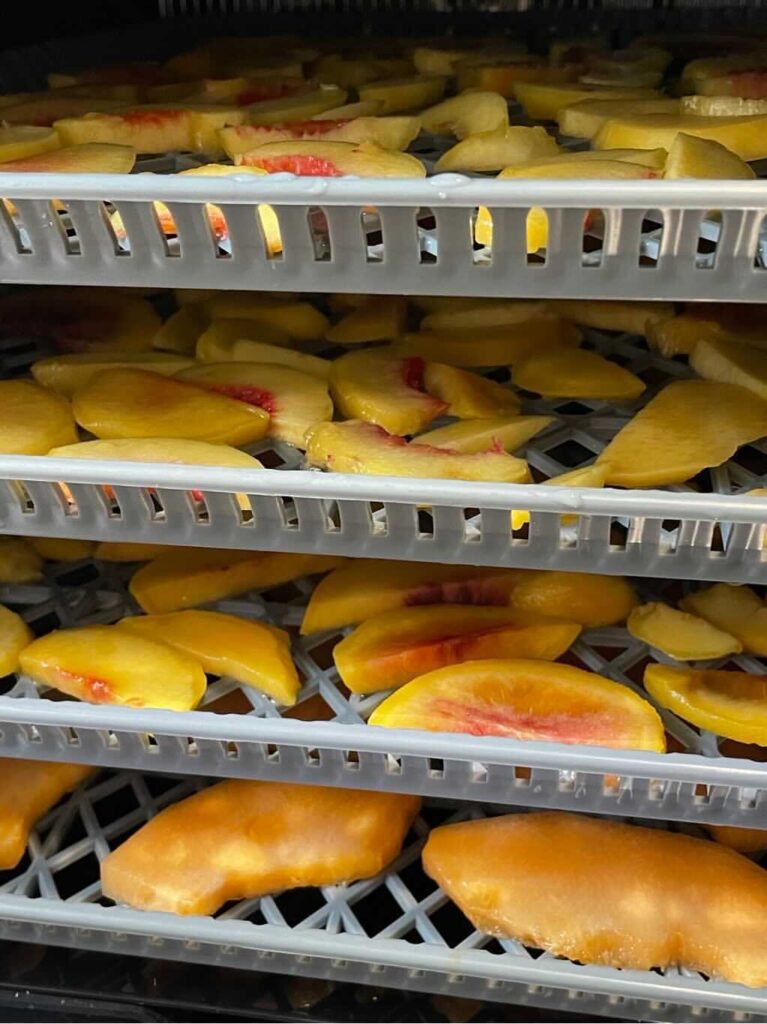
You dehydrate a lot of your foods. What got you into this method of preservation?
HA! My first dehydrator was a panic, impulse buy. I had never dehydrated anything before. It wasn’t on my radar, or list of goals. Our garden was on track to produce a TON, but all canning supply shelves were completely bare. I spotted a busted up box of a very basic Presto Dehydrator on a Wal-Mart shelf and grabbed it before anyone else could. I may have dove on it with my body, to be honest. Hey! It was a way to preserve!
A year and a half later, I now also have a Cabela’s Dehydrator and run both almost every single day, along with my regular canning (I found jars!). I’m loving the ability to have multiple methods of preserving food and enjoy experimenting with different fruits and veggies as well.
As Homesteaders we are always looking towards the next season. As we head into the long winter months, how do you prepare?
I’m still putting up food. The more food I could provide for my family, the less we will need to buy, and the more money we could put towards paying off debt and building our dream- that’s what my brain is focused on at the moment. If we didn’t grow it, then I stock up on what’s on sale. Our local store had Buy1Get1Free Bags of Potatoes, Carrots, Celery, and Onions. Two bags of each are now all dehydrated in my pantry and ready for winter.
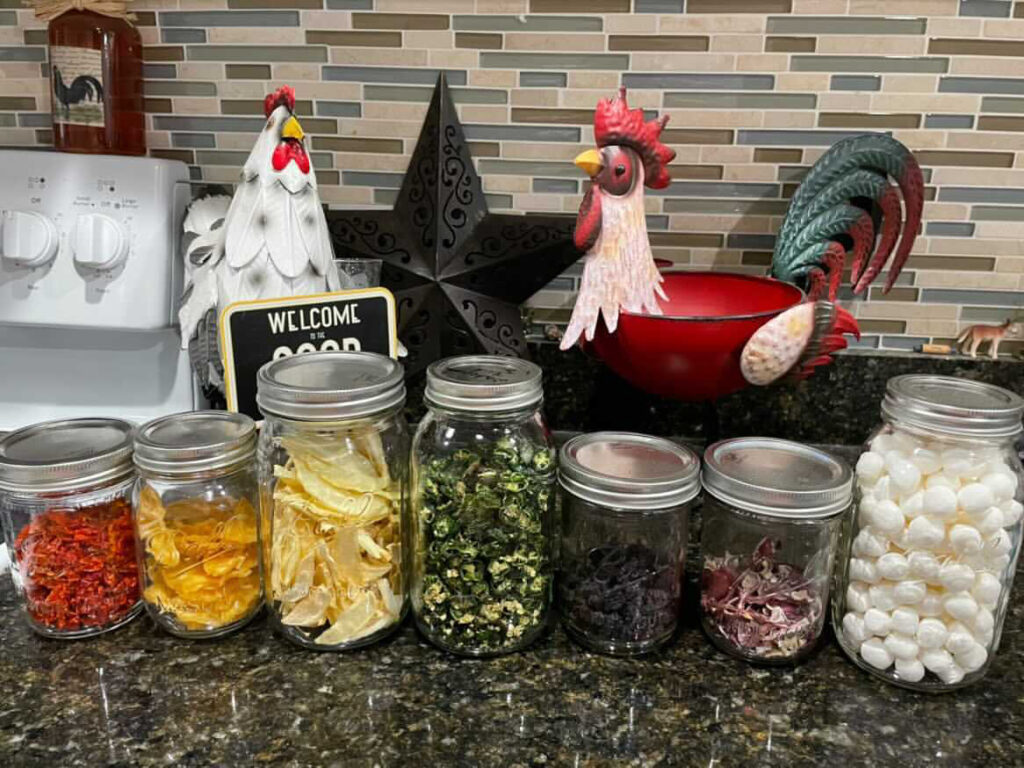
Do you have any thoughts or tips for new or curious dehydrators?
Go for it and have fun! If you are able to swing it financially, try to get a dehydrator that at least allows you to regulate the temperature. You don’t need anything super fancy, but one that you could adjust is best. Most household ovens only go as low as 170 degrees. Very basic dehydrators usually are set for 160 degrees without the ability to change it. However, most fruits and veggies you’ll ideally want to dehydrate at 130ish, herbs 85. Jerky you start at 160, then turn down midway through. The higher the temp is, the greater the loss in the nutritional integrity of the food you are dehydrating. So, purchasing one that you could choose the temp is NOT a waste in the slightest.
Also, dehydrating onions will completely stink up your house. While many will suggest doing those in a garage or shed, I encourage you to go for it in the kitchen. It magically makes children find constructive things to do outside and gives you a few hours break inside! ☺
What are your top three favorite things to dehydrate on the homestead?
Onions! – Besides getting a small break from kids on top of me, I actually love dehydrating onions. Not only are they great to have on hand for soups and various recipes, you no longer have to purchase minced onion or onion powder for your spice cabinet! I also like to pop a few in my mouth here and there as a snack. Sounds totally weird but they actually taste like the fried onions that you use for green bean casseroles. Purple onions taste best for snacking.
Cantaloupe- I hated cantaloupe all of my life. It’s a texture thing. However, I LOVE dehydrated cantaloupe and could snack on them all day every day.
Pineapple- So far I’ve only tried canned pineapple because I heard that comes out way better dehydrated than fresh. I seriously can’t make enough to keep in my house, we have been going through it like water. The juice from the can, I use to soak/treat apple slices in for dehydrating to prevent browning and add flavor and/or freeze excess in muffin trays for future use. (*Pineapple juice is known to break down mucus, helping to reduce cough symptoms and great to have on hand during winter’s cold season!)
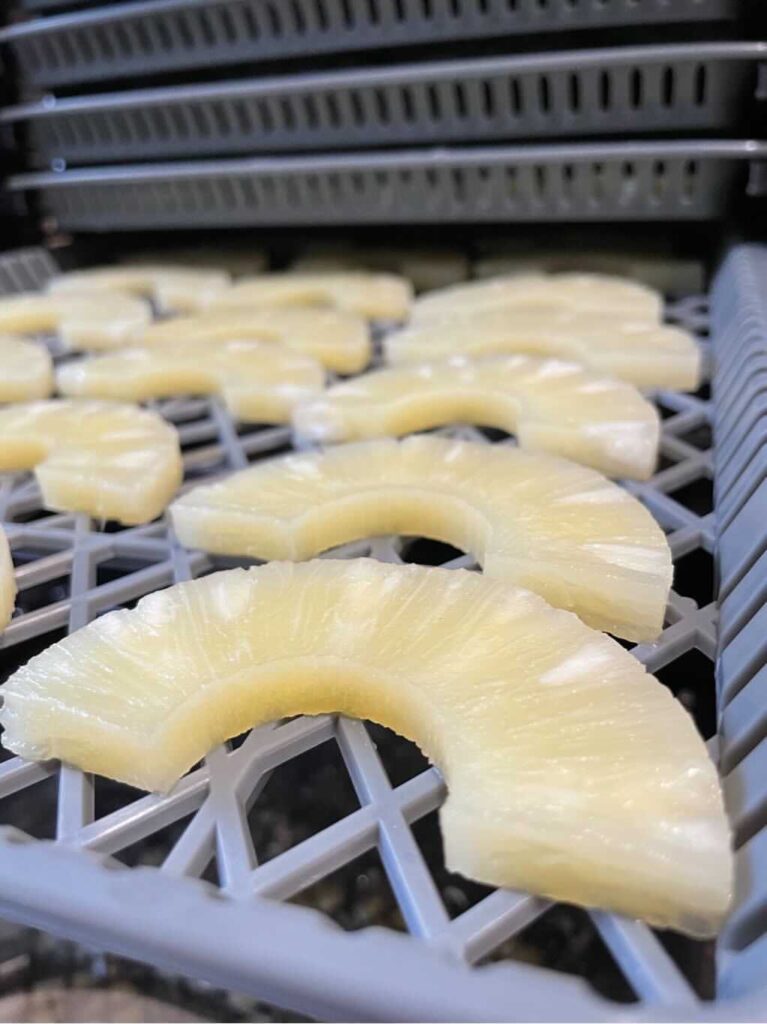
What would you share/recommend with beginners looking to preserve their food this way?
Besides the type of machine that I mentioned above, I would suggest looking up “How To” YouTube videos. Purposeful Pantry and RoseRed Homestead both have wonderful tutorial videos as well as ideas for how to use what you’ve dehydrated. So many fun ideas out there with what you could do, like fruit powder for easy smoothie additions, sneaking veggie powder and nutrition into your kid’s meals, and even homemade “lucky charm” marshmallows by dehydrating mini marshmallows!
Preparing The Homestead for Winter
Emily shared so many great tips on how to use dehydration as a method for preserving food for winter. I know she inspired me personally to start doing this very thing with the enormous pepper harvest we had this year. Freezer space is a hot commodity and canning supplies can be costly and hard to come by, so this method of preservation is genius!
You can follow and learn more about Emily and her homesteading journey by visiting her at her blog “Halfway to Homesteading” that is full of great information and personal stories. You can also follow her adventures on Instagram and Facebook. She is always posting great photos of the foods she is dehydrating or the syrup she is making.
I saved the best for last here y’all! You can also download her Homestead Kickstarted Ebook as well! This book is so helpful for any beginner homesteader or anyone just wanting to learn a little more about homesteading.
Tools to Get You Started with Dehydrating
While you don’t have to go out and buy a bunch of stuff, I wanted to provide you a few items you may want to check out to get you on your way to dehydrating like a pro.
- Dehydrator– There are so many dehydrators to choose from, like the Presto Dehydrator that Emily started with, to ones that are larger with multiple heat settings for everything from herbs to jerky.
- Storage Solutions– These Ball Storage Jars with latch are not only cute but super functional when storing your dried goods.
- Spice Grinder- If you are going to be drying herbs and spices, I highly recommend a separate spice grinder from your coffee grinder!
We hope you have enjoyed the first in a series of posts on preparing the homestead for winter. Make sure to keep your eyes open for more great posts like this!


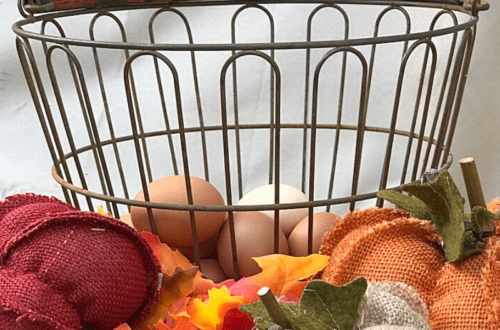
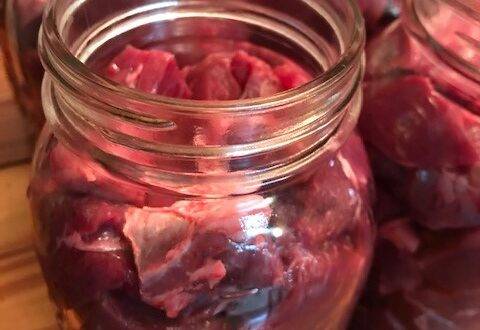

10 Comments
Emily Maxfield
What an honor! Thank you so much! You always do such a beautiful job with your blog posts. I hope more people jump on the dehydrating band wagon and see what fun it is and how beneficial it could be to their family (and pocket book!).
hacketthillfarm
Thank you for allowing me to feature your and your lovely homestead on our blog! You definitely inspired me to dehydrate more! My dehydrator has not stopped in the last month and a half! I have peppers in it as we speak!
Mummy Conquering Anxiety
Such a great and informative post.
I also like the interview element.
I would love to start doing this as a hobby and to preserve food.
Heather
I just started dehydrating foods to stock my pantry the past few months, amazing article, thank you!
Passport and Pathways
This is so detailed and so interesting! I’ve always wanted to give this method of preservation a try, but wasn’t sure how to go about doing it. It’s a great way to eliminate food waste too. Thanks for sharing!
hacketthillfarm
I am so glad you found this post helpful and hope that it helps to get you started on your path to dehydrating as a form of preservation!
Jaya Avendel
We have got apple trees and often buy loads of peaches from the local orchards. Dehydrated apples and peaches keep well for the winter, but I also enjoy making sauces, chutneys, and canning the whole fruits. Our dehydrator then is mostly used for drying out the moister herbs we harvest, such as comfrey.
Thanks so much for sharing this informative and interesting post!
hacketthillfarm
Those all sound delicious!
Jamieadstories
I like dehydrated fruit and buy it often. Great suggestions for making space.
Michelle Gast
I need to try this one day! Thank you for sharing this!
~Michelle
https://michellescrazybusylife.net